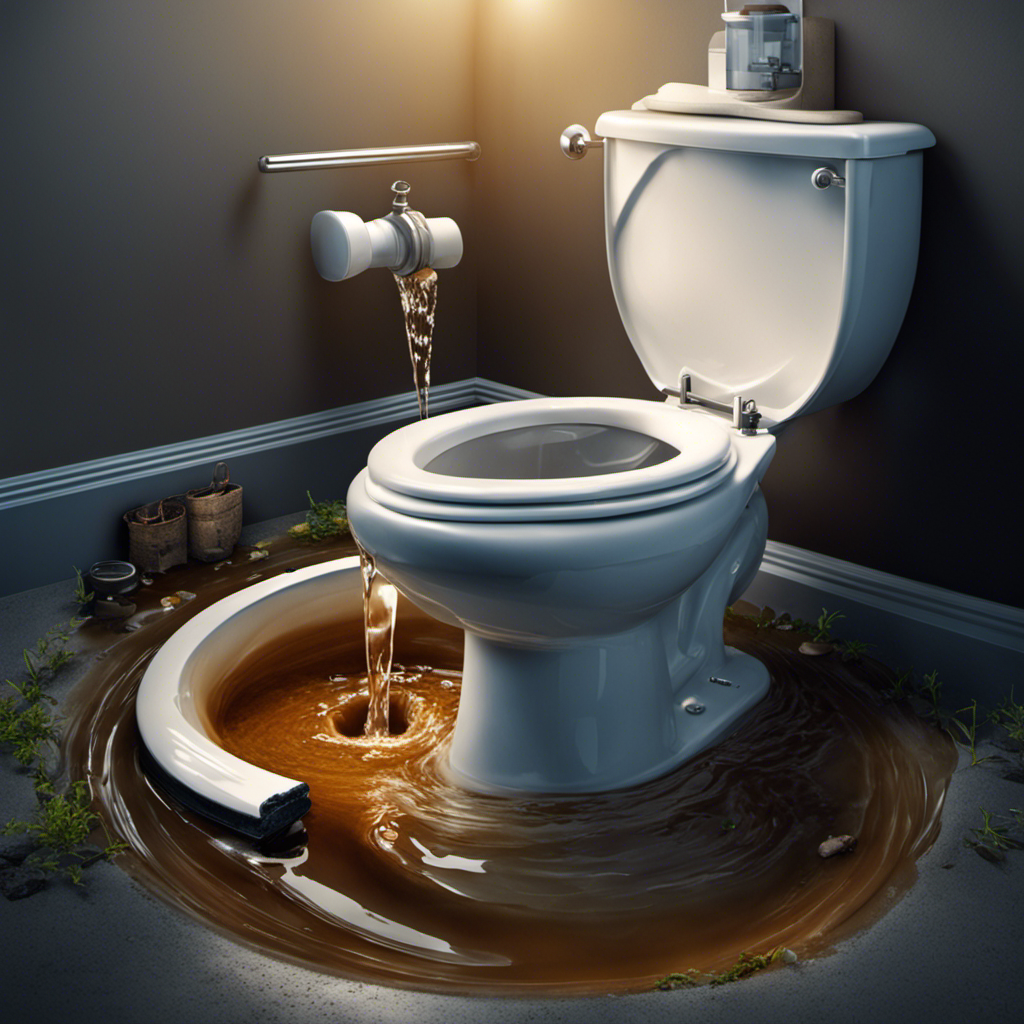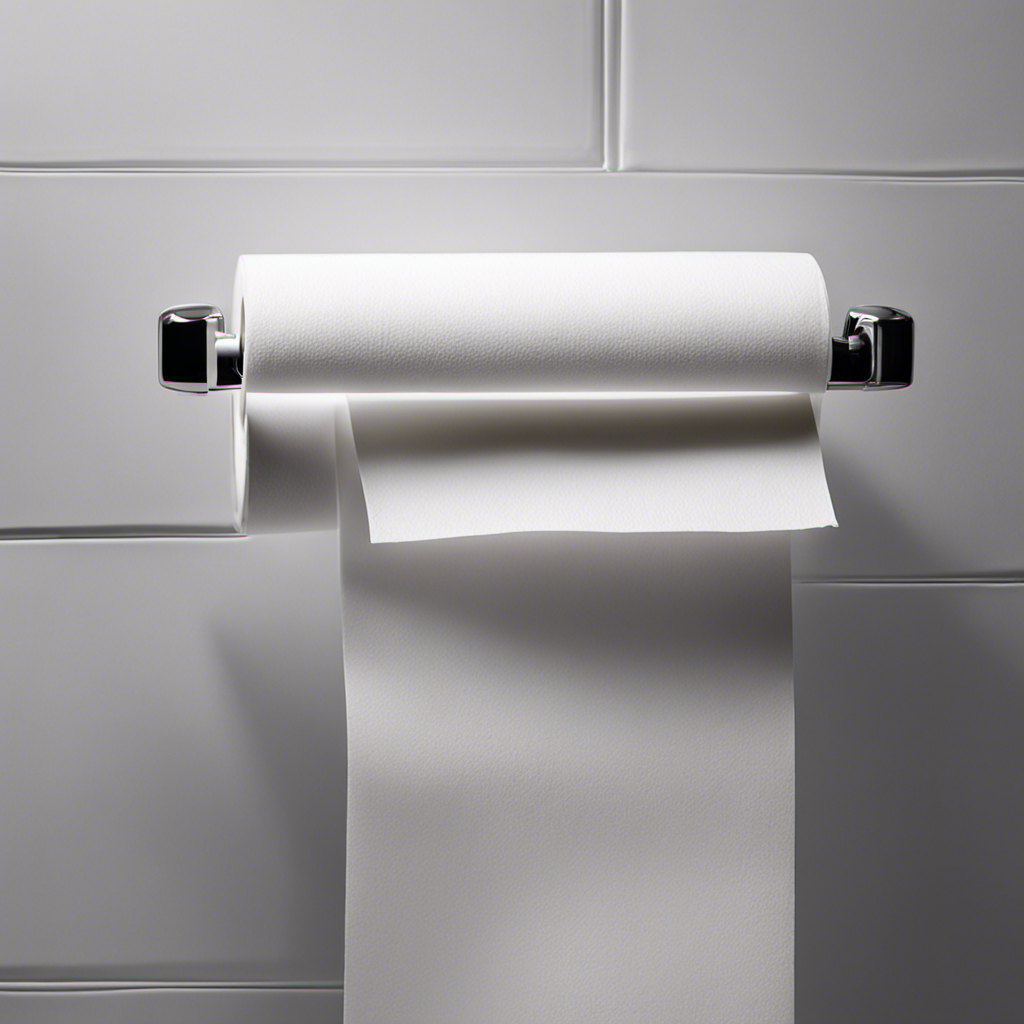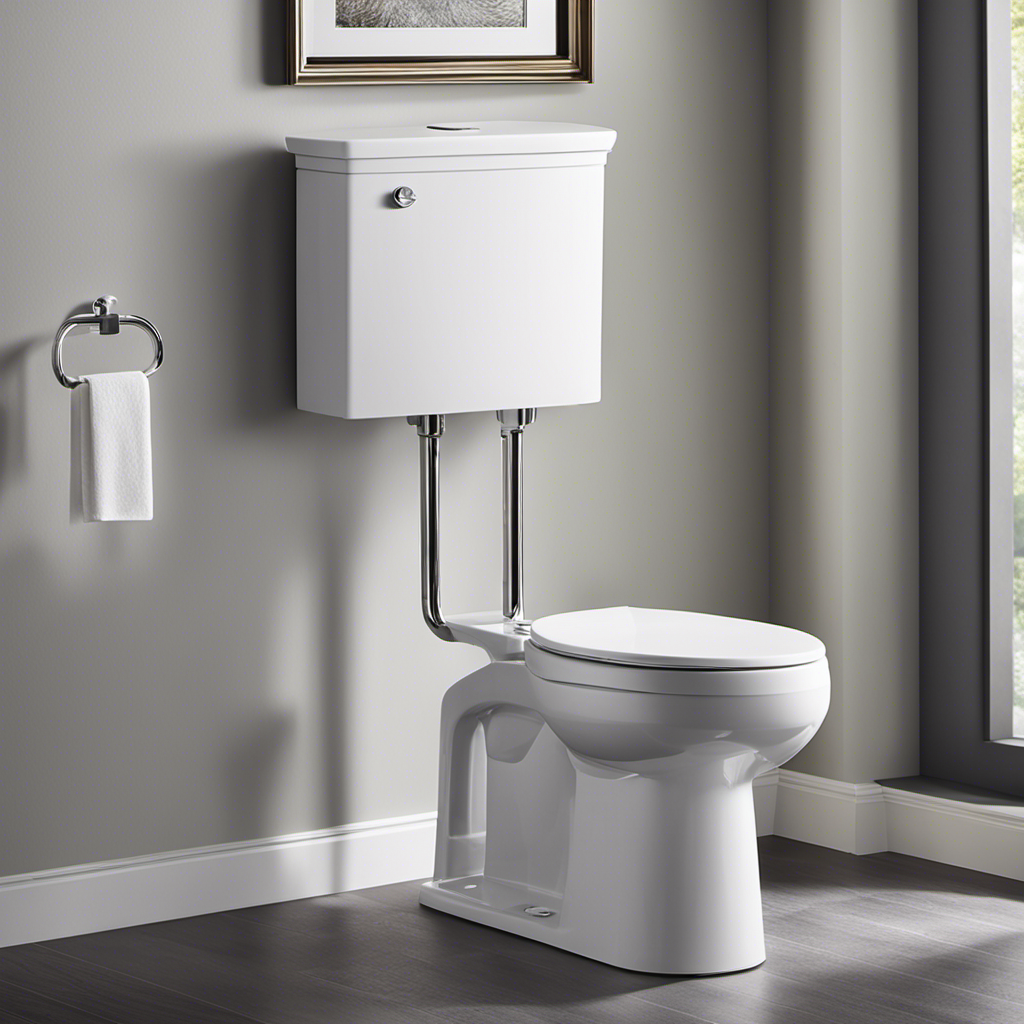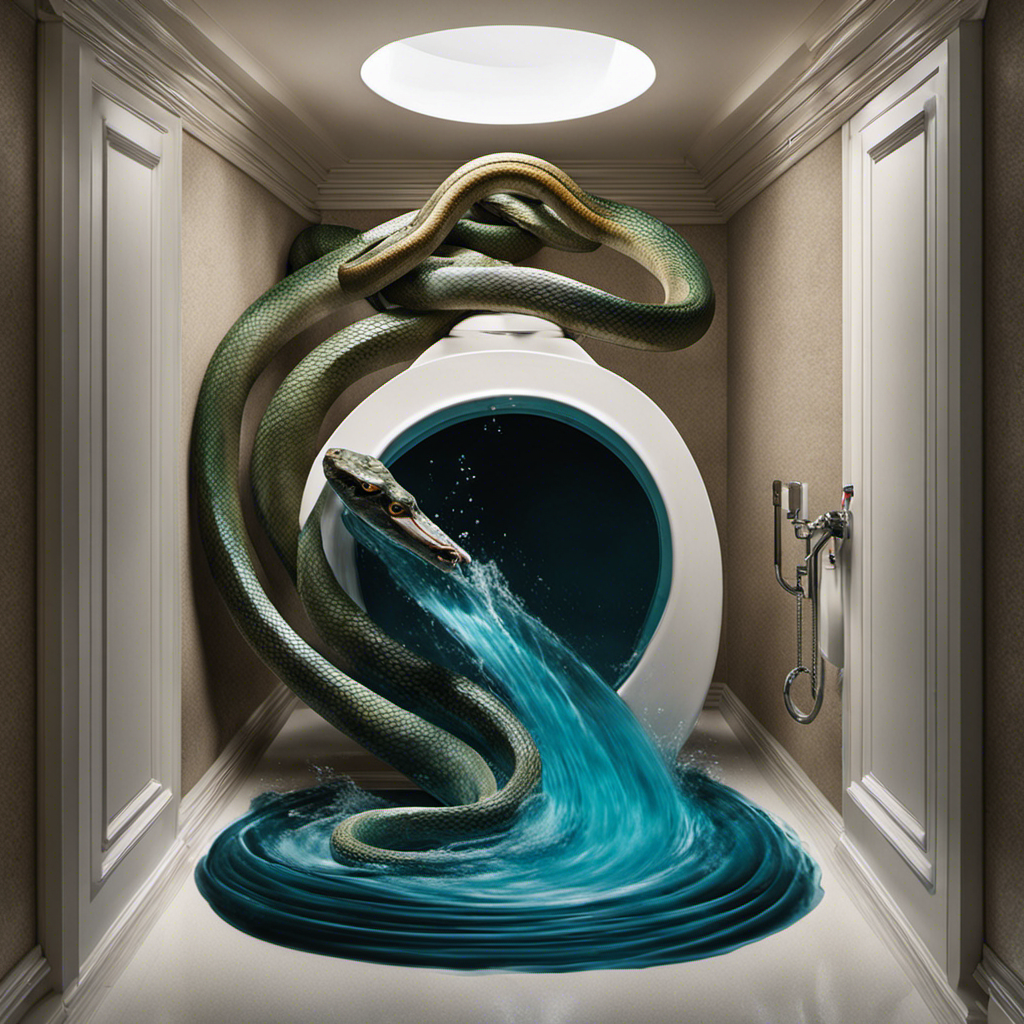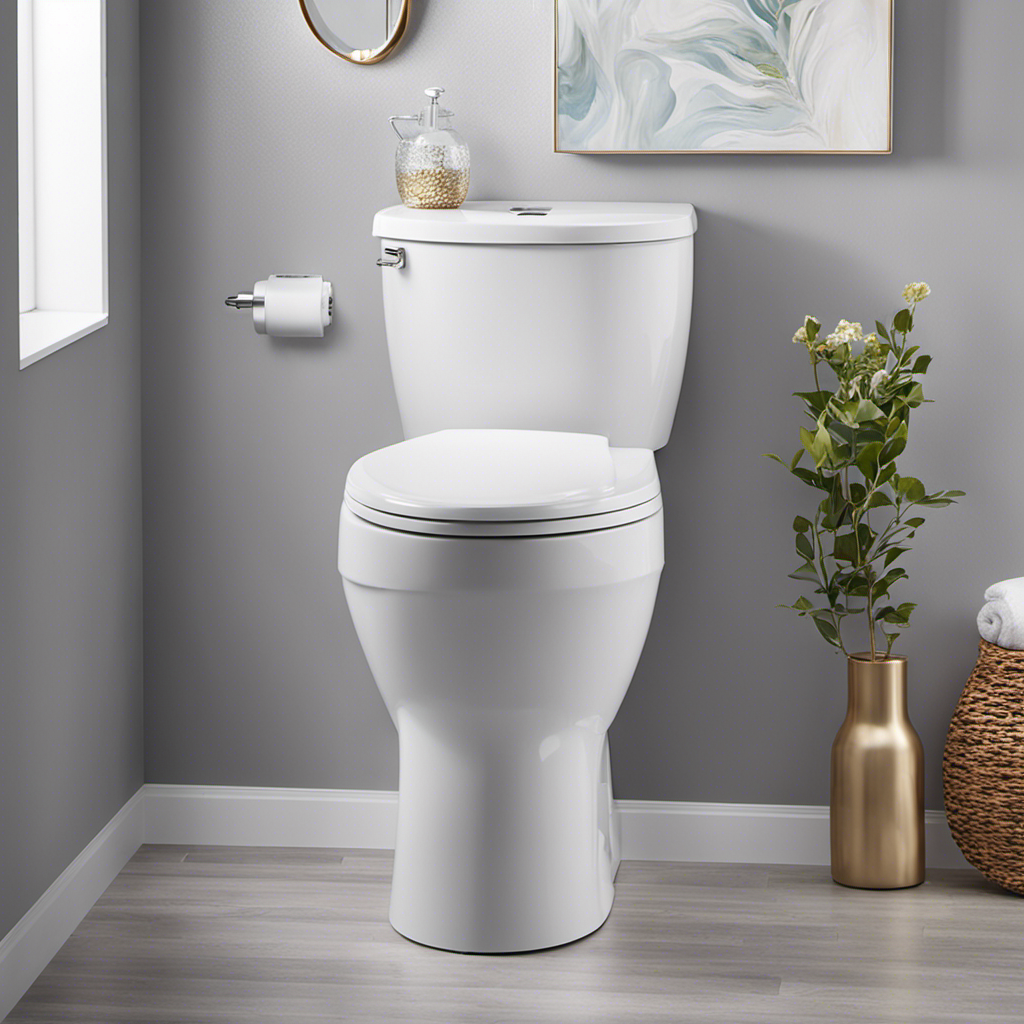I’ve had my fair share of frustrating moments with a toilet that just wouldn’t flush.
Picture this: you’re rushing to get ready for work, but your toilet decides to throw a tantrum and refuses to flush.
It’s a common issue that can leave us feeling helpless and wondering what on earth is going on.
But fear not, because in this article, we will delve into the possible reasons behind a non-flushing toilet and provide you with troubleshooting steps to fix the problem.
Key Takeaways
- Possible reasons for a non-flushing toilet include toilet clogs, flushing foreign objects, buildup of debris in the pipes, low water pressure, and closed valve or malfunctioning pump.
- Common toilet flushing issues include toilets that won’t flush properly, toilets that require holding down the flush handle for an extended period, slow water drainage from the toilet bowl, toilets that make gurgling sounds when flushed, and consistently low water levels in the bowl.
- Troubleshooting steps for a flushing problem include checking the water level in the tank and adjusting the float if needed, inspecting and replacing a worn out or damaged flapper valve, properly adjusting the chain connecting the flush handle to the flapper valve, using a plunger to clear blockages in the drain, and removing the toilet and manually clearing a clog with a plumbing snake if necessary.
- Steps to fix a toilet that won’t flush include checking the water level in the tank and adjusting the float if needed, ensuring the water level is about an inch below the top of the overflow tube, flushing the toilet to test if the problem is resolved, investigating for other issues such as a clogged drain or faulty flapper valve, and seeking professional help if the problem persists.
Possible Reasons for a Non-Flushing Toilet
There are several possible reasons why a toilet isn’t flushing.
One common issue is a toilet clog, which occurs when something gets lodged in the pipes and prevents proper flushing. This can happen due to excessive toilet paper usage, flushing foreign objects, or a buildup of debris over time.
Another potential cause is low water pressure. If the water pressure is too low, it may not provide enough force to effectively flush the toilet. This can occur due to a problem with the water supply, such as a closed valve or a malfunctioning pump.
In order to troubleshoot and fix these issues, it is important to identify the specific cause and take appropriate action, such as using a plunger to clear a clog or checking the water pressure and making necessary adjustments.
Common Toilet Flushing Issues
One common issue you might experience is when your toilet won’t flush properly. This can be caused by a faulty flushing mechanism, which can be identified by certain signs.
One sign is if you have to hold down the flush handle for an extended period of time or if the water drains slowly from the toilet bowl. Another sign is if the toilet makes a gurgling sound when flushed or if the water level in the bowl is consistently low.
To resolve these issues, there are some toilet maintenance tips you can follow. Firstly, check the water level in the tank and adjust the float if necessary. Secondly, inspect the flapper valve and replace it if it is worn out or damaged. Lastly, ensure that the chain connecting the flush handle to the flapper valve is properly adjusted.
Troubleshooting a Flushing Problem
If your toilet won’t flush properly, you can troubleshoot the problem by checking the water level in the tank and adjusting the float if needed. Here are three common signs of a clogged toilet and how to fix them:
-
Weak Flush: If your toilet is not flushing with enough force, it could be due to a clogged toilet flushing mechanism. To fix this, try using a plunger to clear any blockages in the drain. If that doesn’t work, you may need to remove the toilet and manually clear the clog with a plumbing snake.
-
Constant Running: If your toilet is running continuously, it could indicate a problem with the flapper valve. Check if the flapper is sealing properly or if it needs to be replaced. Adjust the chain length if necessary to ensure proper functioning.
-
Overflowing Toilet: An overflowing toilet is a clear sign of a clog. Use a plunger to try and dislodge the blockage. If that doesn’t work, you may need to use a toilet auger to remove the obstruction.
Steps to Fix a Toilet That Won’t Flush
To fix a toilet that won’t flush, start by checking the water level in the tank and adjusting the float if needed. This is a common issue that can be easily resolved with a few simple steps.
First, lift the lid of the toilet tank and observe the water level. It should be about an inch below the top of the overflow tube. If it is too low, adjust the float by either bending the float arm downward or adjusting the screw on top of the fill valve.
Once the water level is properly adjusted, flush the toilet to see if the problem is resolved. If not, there may be other issues such as a clogged drain or a faulty flapper valve.
In the next section, we will explore professional solutions for a non-flushing toilet.
Professional Solutions for a Non-Flushing Toilet
If you’re experiencing a non-flushing toilet, it may be time to consider professional solutions. While DIY toilet troubleshooting can be effective in some cases, there are situations where emergency toilet repair is necessary. Here are three reasons why professional help might be the best course of action:
-
Complex Blockages: If you’ve tried all the usual methods to clear a blockage and the toilet still won’t flush, it could be a sign of a more complex issue. A professional plumber has the knowledge and tools to identify and resolve these stubborn blockages.
-
Hidden Leaks: A non-flushing toilet can sometimes indicate a hidden leak in the plumbing system. This can lead to water damage and higher utility bills if left untreated. A professional can detect and repair the leak before it becomes a bigger problem.
-
Mechanical Malfunctions: Sometimes, the flushing mechanism itself can malfunction, preventing the toilet from flushing properly. A professional can diagnose and fix any mechanical issues, ensuring your toilet operates smoothly.
Frequently Asked Questions
Can a Clogged Toilet Cause It to Not Flush?
Yes, a clogged toilet can prevent it from flushing properly. Common causes of toilet clogs include excessive toilet paper, foreign objects, or a buildup of waste. There are various clogged toilet solutions available to fix this issue.
Is It Normal for a Toilet to Not Flush Properly After Being Used Frequently?
It is not normal for a toilet to not flush properly after being used frequently. Common causes of flushing issues include clogs and inadequate water levels. To prevent clogs, avoid flushing non-flushable items and maintain regular toilet maintenance.
Can a Faulty Flapper Valve Be the Reason Why a Toilet Won’t Flush?
Yes, a faulty flapper valve can prevent a toilet from flushing properly. Common signs include weak flushes or water constantly running. To fix it, replace the flapper valve. To prevent issues, regularly inspect and clean the valve.
What Should I Do if the Toilet Is Flushing Weakly or Only Partially?
If my toilet is flushing weakly or only partially, I would first check the water pressure in the toilet tank. Low water pressure can cause these issues.
Are There Any Temporary Solutions to Fix a Non-Flushing Toilet Until a Professional Can Be Called?
Temporary fixes for a non-flushing toilet until a professional can be called include checking the water supply valve, clearing any blockages in the flush holes, and adjusting the chain or flapper.
Conclusion
In conclusion, troubleshooting and fixing a non-flushing toilet can be a straightforward process if you know what to look for and how to solve the issue.
Remember to check for common problems such as a clogged drain or a faulty flush valve.
According to a recent study, it is estimated that 80% of non-flushing toilet cases are caused by simple blockages that can be resolved with basic tools and techniques.
By following the steps outlined in this article, you can successfully overcome this frustrating problem and restore your toilet’s functionality.
